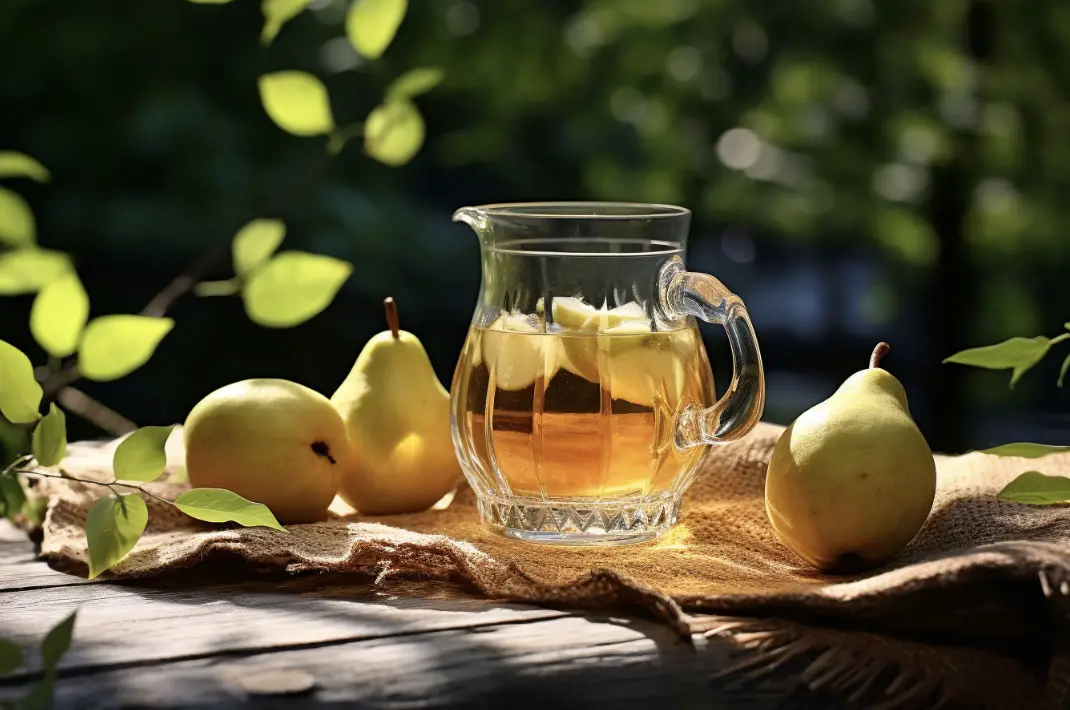Histamine sensitivity is a topic that’s garnered quite a bit of attention in recent years. For those of us who love a good brew, this can be particularly challenging. So, what’s a beer enthusiast to do? There are, in fact, some great low histamine beers available. Let’s dive into the specifics.
What’s the Deal with Histamines Anyway?
Histamines are naturally occurring compounds found in various foods and drinks, including beer. They play a role in several bodily functions, like regulating stomach acid and acting as neurotransmitters.
However, for some, high histamine levels can lead to symptoms such as headaches, itchiness, and even migraines. If you’ve noticed that certain beers give you a headache or make you feel unwell, it might be due to their histamine content. But you might want to consider the gluten content as well.

Beer, especially certain types, can be rich in histamines because of the fermentation process.
Factors such as the type of grains used, the yeast, and the fermentation method can all contribute to the histamine content.
Where does Histamine Come from in Beer?
Histamine is a biogenic amine that can be found in various fermented foods and beverages, including beer.
It is formed as a result of the decarboxylation of the amino acid histidine.

During fermentation, certain microorganisms have the capability to produce enzymes called decarboxylases, which can convert amino acids into their respective biogenic amines.
In the case of histamine, it’s the histidine decarboxylase produced by yeast and bacteria (e.g. lactic acid bacteria) that facilitates the conversion of histidine to histamine in brewing.
There are several factors that can influence the histamine content in beers:
- Yeast and Bacteria Strains: Not all yeast and bacterial strains produce significant amounts of histamine. The presence of certain bacteria, particularly some lactic acid bacteria that might be present in spontaneous fermentation or in certain types of sour beers, can contribute to higher histamine levels.
- Ingredients: The amino acid profile of the beer, primarily determined by the malt, but also by adjunct grains, will influence the potential amount of histamine that can be produced. A beer made with a high amount of histidine-rich grains may have a higher potential for histamine formation if decarboxylase-producing microorganisms are present.
- Fermentation Conditions: Temperature, pH, and time can all influence histamine production. Some conditions might be more favorable for histamine-producing bacteria.
- Age: Aged beers, especially those that undergo secondary fermentation or aging in the presence of certain bacteria, might have higher histamine levels.
- Beer Style: Some beer styles might have a higher likelihood of containing histamine, especially those that are spontaneously fermented, barrel-aged, or intentionally brewed with bacteria in addition to yeast (like certain sour beers).
- Sanitation: Good sanitation practices can help reduce the chance of unwanted bacteria, which might produce histamine, from influencing the beer.
It’s worth noting that for the majority of consumers, the histamine levels in beer are not a cause for concern.
However, some individuals may be more sensitive to histamine and could experience allergic-like reactions after consuming foods or beverages with high histamine content.
For these individuals, it might be necessary to be cautious and know which beers or types of beers to avoid.
How to avoid histamine in beer
There are several things you can do to avoid histamine in beer, from considering the brewing methods and storage to the actual raw materials used.
Identifying Low Histamine Beers: The Key Factors
Understanding what factors can contribute to a beer’s histamine content is crucial. Beers that undergo longer fermentation processes, like some Belgian ales, or those brewed with high-histamine grains might be ones to watch out for.
- Type of Grain: Wheat and barley are higher in histamines compared to other grains. Therefore, beers made primarily from these grains might have more histamines.
- Yeast Strains: Yeasts are crucial for brewing beer. Some strains, however, produce more histamines than others. Traditional brewing yeasts tend to produce more histamines.
- Fermentation Process: The longer the fermentation, the higher the histamine content. This is because histamines build up over time during fermentation.
Recommendations for Low Histamine Beers
While the brewing landscape is vast and ever-evolving, some general guidelines can steer you towards beers that are more likely to be low in histamines:
- Gluten-free Beers: These are often made with alternative grains like sorghum, rice, or corn that are lower in histamines. Some of my personal favorites in the gluten-free category include Ground Breaker’s IPA and Glutenberg’s Blonde Ale.
- Lagers: Lagers undergo a different fermentation process and often have shorter fermentation times. This makes them a potentially safer choice for those looking to reduce histamine intake.
- Beers Brewed with Specific Low-Histamine Yeasts: Some brewers are now using yeast strains known to produce fewer histamines. If you can find beers made with these strains, they might be a better choice.
- Freshly Brewed Beers: Beers that haven’t been stored for long periods might have lower histamine content since histamines can accumulate over time.
What about other alcoholic beverages?

Alcoholic Beverages and Their Histamine Content
- White Wines: Histamine levels in white wines were found to range from 3-120 micrograms/l. This relatively lower range compared to some other beverages might make white wines a more suitable choice for histamine-sensitive individuals.
- Champagnes: Histamine content in champagnes varied between 15-670 micrograms/l. This range is broader than in white wines, with some champagnes having quite high histamine levels.
- Red Wines: Red wines exhibited the highest histamine range amongst the mentioned beverages, ranging from 60-3800 micrograms/l. Factors like grape variety, fermentation methods, and aging can contribute to this wide range.
- Beers: Histamine levels in beers were found to be between 21-305 micrograms/l. This range is lower than in red wines but can still be substantial for certain sensitive individuals.
- Vermouths: Vermouths contained between 0.21 to 2.65 mg/liter of histamine and trace amounts to 6.66 mg/liter of another biogenic amine, tyramine.
- Ciders: Ciders have amounts around 1.42 mg/liter of histamine on average and up to 2.93 mg/liter of tyramine, which is a similar compund.
Consider Allergies or Sulfite Sensitivity
While histamine sensitivity is one of the known triggers, other factors, such as allergies to ingredients used in beverages and sensitivity to sulfites, can also lead to similar symptoms. For someone trying to identify the root cause of their adverse reactions after drinking alcohol, it can be quite challenging.
Allergies to Ingredients in Alcoholic Beverages:
Alcoholic beverages are made from a wide range of ingredients. Some individuals might be allergic to certain components used in the production of these drinks that would give the same symptoms as those of histamine sensitivity.
Common allergens include:
- Grains: Beverages like beer and whiskey are often derived from grains like barley, wheat, and rye. People with celiac disease or non-celiac gluten sensitivity might react adversely to these ingredients.
- Fruits: Wine, cider, and certain liqueurs are fruit-based. Individuals allergic to grapes, apples, or other fruits might experience symptoms upon consumption.
- Tree Nuts: Some alcoholic beverages might be flavored with ingredients derived from tree nuts, posing a risk to those allergic.
Sulfite Sensitivity:
Sulfites are sulfur compounds commonly added to wines and some beers as preservatives. They help in preventing the oxidation of wine and inhibit the growth of certain unwanted bacteria.
Symptoms of sulfite sensitivity include:
- Asthma symptoms like wheezing or coughing (particularly common in sulfite-sensitive asthmatics)
- Hives or rash
- Stomach cramps or diarrhea
- Anaphylaxis (rare but severe)
It’s worth noting that sulfite sensitivity is not an allergy in the true sense, but rather a sensitivity or intolerance.
Distinguishing Between Histamine Sensitivity, Sulfite Sensitivity, and Allergies:
Given the overlap in symptoms, it can be challenging to pinpoint the exact cause of the reaction. Here are some steps that might help:
- Read Labels: Especially in the case of sulfites, wines containing significant amounts (more than 10 parts per million) will typically have a label stating “contains sulfites.”
- Track Reactions: Maintain a journal to note down what you consumed and the reactions that followed. Over time, patterns may emerge that point to specific triggers.
- Elimination and Challenge: This involves eliminating potential culprits from your diet and then reintroducing them one at a time to observe reactions. It’s best to do this under medical supervision.
- Medical Tests: Allergy tests can help identify specific allergies. Furthermore, a diamine oxidase (DAO) enzyme test can be used to measure the body’s ability to process histamine.
- Understand the Source: Histamine reactions often depend on the source. For instance, an individual might react to red wine but not white wine or might handle grain spirits better than wine.
In summary, if someone suspects they are reacting to an alcoholic beverage, it’s essential to consult a healthcare professional or allergist to get a proper diagnosis.
It will help in distinguishing between allergies, sulfite sensitivity, and histamine sensitivity, enabling safer and more informed choices regarding alcoholic consumption.
Conclusion
For beer enthusiasts with histamine sensitivity, the landscape might seem daunting. However, understanding the factors at play can help you make informed choices about what you drink.
Top 10 Facts to Remember About Low Histamine Beers:
- Histamines are naturally occurring compounds found in many foods and drinks, including beer.
- High histamine content can cause symptoms like headaches and itchiness.
- Longer fermentation processes can increase histamine content.
- Wheat and barley are higher in histamines compared to other grains.
- Gluten-free beers often use alternative grains lower in histamines.
- Lagers, due to their fermentation process, might be lower in histamines.
- Specific yeast strains can affect the histamine content of beers.
- Freshly brewed beers might contain fewer histamines.
- The storage duration of beer can impact its histamine content.
- Awareness and research are keys to enjoying beer without the adverse effects of histamines.
From my personal experience, being both a brewer and someone who’s had to navigate the world of histamines, it’s essential to remember that everyone’s tolerance level is different.
It might require some trial and error to find what works best for you. But with the increasing awareness and the ever-growing craft beer industry, there are more options than ever for those of us looking for low histamine beers. Cheers to that!
FAQs on Low Histamine Beers
1. Why do some people have histamine sensitivity?
Histamine sensitivity or intolerance arises when there’s an imbalance between histamine intake (from foods and beverages) and the body’s ability to break it down. This is often due to a deficiency in an enzyme called diamine oxidase (DAO). When the body doesn’t produce enough DAO, histamine accumulates in the system, leading to allergic-like reactions.
2. Are there any additives in beer that can trigger histamine reactions?
Yes, some beers might contain additives or stabilizers that can induce histamine reactions. These include sulfites, which are used as a preservative, and certain coloring agents. Always read the label and check for any additives if you’re sensitive.
3. Are there any beers that are 100% histamine-free?
It’s challenging to find beers that are entirely histamine-free due to the natural fermentation process which often produces histamines. However, beers labeled as “low-histamine” have reduced levels and might be a safer option for those with sensitivities.
4. How does aging impact the histamine content in beer?
Aging can increase histamine content. As beers age, particularly those that undergo secondary fermentations in the bottle (like many Belgian ales), their histamine levels can rise. If histamine sensitivity is a concern, it might be best to opt for fresher beers rather than aged ones.
5. Can I develop histamine sensitivity later in life or is it genetic?
Histamine sensitivity can indeed develop at any stage in life. While there may be a genetic predisposition, other factors such as gastrointestinal diseases, certain medications, or even gut health can play a role in its onset. If you suspect you have developed a sensitivity, consulting a medical professional is recommended.
References
- Wantke, F., Götz, M., & Jarisch, R. (1994). The red wine provocation test: intolerance to histamine as a model for food intolerance. Allergy Proc, 15(1), 27-32. DOI: 10.2500/108854194778816599
- Vidal-Carou, M.C., Isla-Gavin, M.J., Marine-Font, A., & Codony-Salcedo, R. Histamine and tyramine in natural sparkling wine, vermouth, cider, and vinegar.





